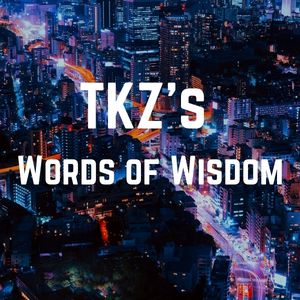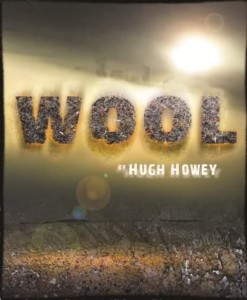I wanted to follow last time’s Words of Wisdom on short fiction with a Words of Wisdom look at the novella. I’ve written several novellas, and have published three of them, and have been hankering to write another. So, it seemed like the perfect follow up to short stories.
It turned out that Steve Hooley did that, after a fashion, not quite two years ago. His own post had an excellent definition and history of the novella, and then listed bullet points from James Scott Bell’s 2012 post on writing the novella, as well as Jordan Dane’s look at the novella in 2016, as well two points from a 2015 Joe Moore post.
After some thought, I decided it would still be worth giving Steve’s, Jim’s and Jordan’s posts the full Words of Wisdom treatment, with excerpts from each for discussion. I hope you will find this return to the novella not too soon. Certainly it’s a perennial favorite of mine.

Definition
The word “novella” is the feminine form of “novello,” Italian (masculine) for “new.”
The novella has been described as “a short novel or a long short story.” Its length is listed as 10,000 – 40,000 words (some sources say 20,000 – 50,000 or even 15,000 – 60,000). The novella usually has a single plotline, is focused on one character, and “can be read in a single day.” It may or may not be divided into chapters, and white space is traditionally used to divide sections.
Examples of novellas that used chapters:
- Animal Farm – George Orwell
- War of the Worlds – H.G. Wells
During its history, the novella has been used in different ways. Let’s see if it is the “load-it-up-with-everything compact utility vehicle” or a “fast-sexy-Italian sports car.”
History
The Britannica entry for Novella (summarized) states that the novella originated in Italy during the Middle Ages, where its form was originally based on local events (humorous, political, or amorous). Writers such as Boccaccio, Sacchetti, and Bandello later developed it into a psychologically subtle and structured short tale, using a frame story to unify.
Chaucer introduced it to England with The Canterbury Tales.
During the Elizabethan period, Shakespeare and other playwrights used plots from the Italian novella.
The content and form of these tales influenced development of the English novel in the 18th century, and the short story in the 19th century.
The novella flourished in Germany (known as Novelle) in the 18th, 19th, and 20thcenturies, often contained in a frame story and based on a catastrophic event. It was characterized by brevity, a self-contained plot, and ending with irony, while using restraint of emotion and an objective presentation.
Examples of novellas:
- Tolstoy – The Death of Ivan Ilich
- Dostoyevsky – Notes from the Underground
- Joseph Conrad – Heart of Darkness
- Henry James – The Aspern Papers
Steve Hooley—April 22, 2022
Yes, a novella is obviously shorter than a novel. A rule of thumb puts the novella between 20k and 40k words.
Here are the general guidelines for writing a novella. I say general because, like all writing principles, they are subject to change. But ONLY if you have a good reason for the exception!
- One plot
The length of the novella dictates that it have one plot. It’s a too short to support subplots. That doesn’t mean you don’t have plot complications.It’s just that you are doing your dance around one story problem.
- One POV
It’s almost always best to stick with one point of view. Both of my novellas, Watch Your Back and One More Lie, are written in first person POV. That’s because you want, in the short space you have, to create as intimate a relationship between the Lead character and the reader as possible.
As indicated earlier, more than one POV is acceptable if you have a reason for including it. And that reason is NOT so you can fill more pages.
A modern master of the novella is, of course, Stephen King. A look at his collection, Different Seasons, reveals three novellas written in first person POV. The exception is Apt Pupil, which is about an ex-Nazi’s influence over a thirteen-year-old boy. The story thus has a reason for shifting between these two points of view. However, I note that Apt Pupil is the longest of these, and I actually suspect it’s over 40k words, making it a short novel.
- One central question
There is one story question per novella, usually in the form: Will X get Y?
In Rita Hayworth and the Shawshank Redemption, by Stephen King, the question is, will the wrongly convicted Andy Dufresne survive in God-awful Shawshank prison?
In The Old Man and the Sea: Will the old fisherman, Santiago, land the big fish?
A Christmas Carol: Will Ebenezer Scrooge get redemption?
- One style and tone
There are novels that crack the style barrier in various ways, but a novella should stick to one tone, one style throughout.
In the old pulp days, novellas were common and usually written in the hard boiled style.
My two novellas are done in the confessional style of James M. Cain––the narrator looking back at his past sins, detailing the consequences of same, with a twist ending.
Romance would have a different tone. Ditto paranormal. Whatever the genre, keep it consistent.
The Benefits of the Novella
Digital publishing has brought novellas back into favor. There are some story ideas that don’t merit 90k words, but may be just right for 30k. The suspense story is particularly apt for this form. One of the great masters, Cornell Woolrich, practically made his career on novellas of suspense.
An indie-publishing writer can charge 99¢ – $2.99 for novellas. They can obviously be turned out more quickly than a full length novel.
Some Suggestions for Writing the Novella
- Make sure your premise is rock solid
You don’t want to travel down the road of a flabby idea, only to find out after 15k words that it isn’t working. Come up with a premise that creates the greatest possible stress for the Lead character. For example, One More Lie is about a man accused of murdering his mistress. He’s innocent of the crime, but guilty of the adultery. A bit of stress, I’d say.
- Write in the heat of passion
Novellas are great for the NaNoWriMos among us. Getting the story down quickly releases that inner creativity we long for. And there won’t be the need for as much revision as in a novel, which has subplot complications to deal with.
- Use white space to designate scene changes
Instead of chapters, the novella usually employs white space between scenes. Some writers do break up a novella into sections designated by numbers. That’s a matter of style. Just don’t say “Chapter 1” etc. It’s not necessary and interrupts what should be the flow.
- Keep asking, How can it get worse?
Whether your novella is about the inner life of a character (as in The Old Man and the Sea)or the outer life of the plot (as in Double Indemnity) turn up the heat on the character as much as you can.
Think of the novella as a coil that gets tighter and tighter, until you release it at the end.
James Scott Bell—August 12, 2012
Challenges of Writing a Shorter Story:
I have always been a novel writer. I never started out on shorter material, thinking it would be easier to write, as some people might believe. In my mind, a shorter story is more challenging. It’s only been this year that I’ve written shorter stories for Amazon Kindle Worlds. My novellas have been 25,000-30,000 words, at my option. That length forced me to change how I write, but I didn’t want my readers to feel that I’ve short-changed their reading experience because my voice or style has been stripped down.
Personal Challenges:
1.) Plots must be simpler – This has taken some new thinking and conceiving of plots in advance while I’m planning my story. More intense story lines with complex layers have to be shed in order to peel back to the essence of a story.
2.) Minimize subplots – Subplots can still be done, but they are more of a challenge, so I try to limit the way I think out a story. The subplot must be integral to the overall story and enhance the pace or suspense.
3.) Setting descriptions and prose must be simplified – Getting straight to the bare emotional elements of a scene or a story will stick with readers and provide them with a solid reading experience, without making them feel that the writing is too sparse. I must be truly selective on what images I choose and the wording I use to create the most impact.
4.) Novellas are like screenplays – My shorter stories are more like screenplays with a focus on dialogue and major plots movements, less on back story and lengthy internal monologue.
5.) Novellas are like the visuals of film – I like this aspect. Give the reader a visual experience as if they are watching a movie. The scenes must have memorable images to tap into their minds quicker, using fewer words to do it.
Jordan Dane—April 21, 2016
***
Thanks for revisiting the novella today. Now it’s your to weigh in.
- Do you enjoy reading at the novella length? Do you agree with the definition of novella that Steve shared above?
- Do you write novellas? What tips do you have ?
- If you do write at the novella length, what challenges have you encountered? How have you overcome them?
- Have you published a novella, traditionally or indie? If so, how has it gone? What differences, if any, do you see in how novellas are marketed versus novels?







